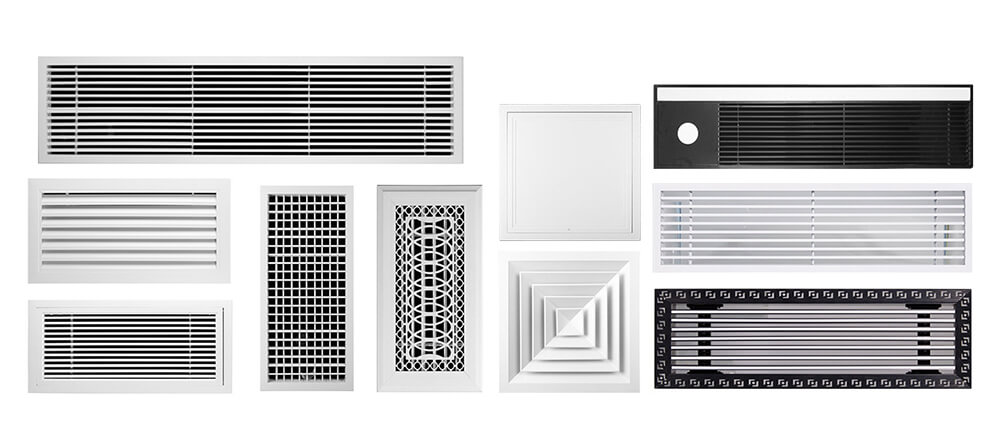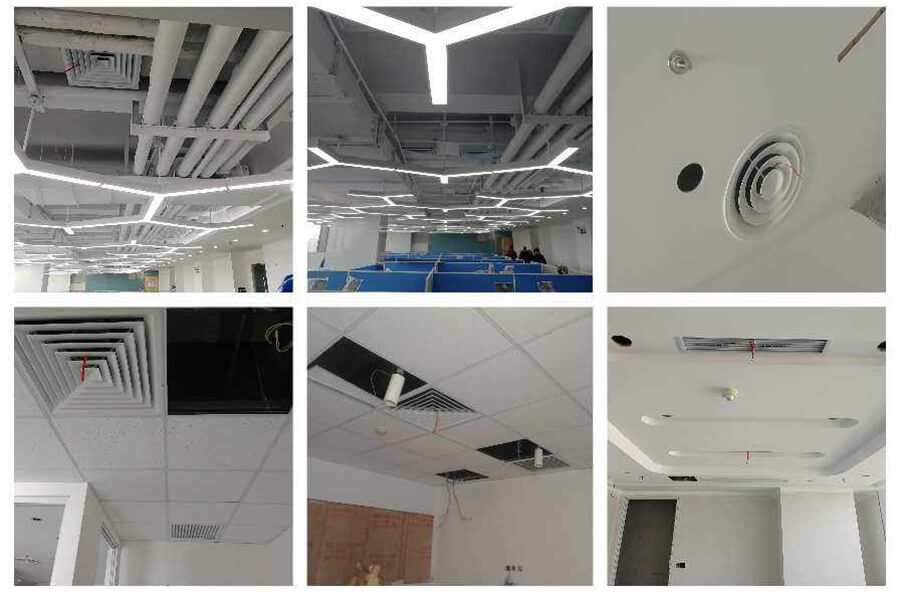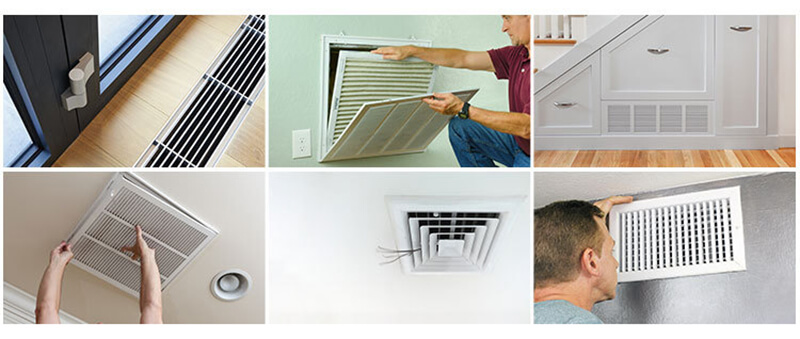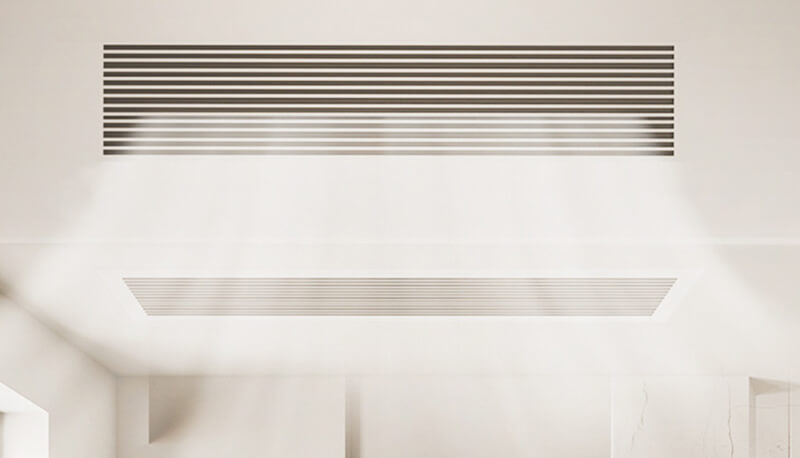Maintaining a comfortable indoor environment is crucial for both residential and commercial spaces. Heating, Ventilation, and Air Conditioning (HVAC) systems play a pivotal role in achieving this comfort by regulating temperature, humidity, and air quality. Among the essential components of HVAC systems are diffusers, grilles, and registers. While often overlooked, these elements are critical for the efficient distribution of conditioned air.
This article delves into the common issues associated with HVAC diffusers, grilles, and registers, providing practical solutions to enhance their performance and ensure optimal indoor comfort. Whether you’re a homeowner seeking to improve your HVAC system or a professional looking for deeper insights, this guide offers valuable information to address and resolve these issues.
Understanding HVAC Components
What Are HVAC Components?
HVAC systems consist of various components that work together to regulate indoor climate. Among these, diffusers, grilles, and registers are essential for the proper distribution and circulation of air. Understanding the roles and functions of these components is the first step in identifying and addressing any issues that may arise.
Grilles
Grilles are the most basic type of vent used in HVAC systems. They consist of slits or perforations that allow air to flow through. Typically, grilles are static and do not have adjustable parts, making them ideal for air intake or return air purposes. They can feature angled slats, known as louvers, to help direct airflow in a specific direction, although their ability to adjust airflow is limited.
Key Functions of Grilles:
- Allow air to be drawn into the HVAC system for conditioning.
- Provide a barrier to prevent debris from entering the system.
- Typically used in return air ducts to facilitate air circulation.
Registers
Registers are similar to grilles but come with an added feature: adjustable dampers. These dampers enable users to control the direction and volume of airflow, making registers more versatile than grilles. Registers are commonly used at supply vents to distribute conditioned air into different rooms.
Key Functions of Registers:
- Deliver conditioned air into the living space.
- Adjustable dampers for controlling airflow direction and volume.
- Enhance comfort by allowing users to customize airflow to specific areas.
Diffusers
Diffusers are designed to disperse air evenly throughout a room. Unlike registers, diffusers can direct air in multiple directions, ensuring a balanced distribution of conditioned air. They are typically used in ceiling or high wall installations to maximize their efficiency in spreading air across a larger area.
Key Functions of Diffusers:
- Disperse conditioned air evenly in multiple directions.
- Help maintain consistent temperature and airflow throughout the space.
- Often include dampers for adjustable airflow control.
The Importance of These Components
The effectiveness of an HVAC system heavily depends on the proper functioning of diffusers, grilles, and registers. They not only ensure that air is adequately circulated and distributed but also play a crucial role in maintaining energy efficiency and indoor air quality.
Summary:
- Grilles: Primarily used for air intake, static in nature.
- Registers: Used for air supply, come with adjustable dampers.
- Diffusers: Distribute air evenly, suitable for ceiling or high wall installations.

Common Issues with HVAC Components
1. Condensation Problems
Condensation is a significant issue, especially in humid climates. When the cold air from the air conditioning system meets warm, moist air in the room, condensation forms on metal diffusers and grilles, leading to water droplets and potential water damage. This issue is exacerbated in regions with high humidity levels, where the dew point is often high.
Solution: One effective solution is to use composite materials for diffusers instead of metal. Composite materials maintain a temperature closer to the room temperature, significantly reducing the occurrence of condensation. Additionally, ensuring proper insulation around ducts can help minimize this issue by reducing the temperature differential between the air inside and outside the ducts.
2. Airflow Control
Improper airflow control can lead to uneven temperature distribution and discomfort within a space. Registers and diffusers that lack adjustable dampers cannot direct airflow effectively, causing some areas to be over-conditioned while others are under-conditioned.
Solution: Installing registers and diffusers with adjustable dampers allows for better control over the direction and volume of airflow. This ensures that air is distributed evenly across the room, enhancing comfort and efficiency. Regular maintenance and adjustments of these dampers are also crucial to maintain optimal airflow control.
3. Noise Concerns
Noise from HVAC systems can be a major nuisance, particularly in residential settings. The sound of air rushing through vents can be disruptive and affect the overall comfort of the indoor environment. This issue is often caused by poorly designed or improperly installed diffusers and registers.
Solution: Using registers and diffusers with integrated dampers can help reduce noise levels. These dampers act as mufflers, smoothing the airflow and minimizing the noise produced by the HVAC system. Additionally, ensuring that ducts and vents are properly sealed and insulated can further reduce noise transmission.
4. Energy Efficiency
Energy inefficiency in HVAC systems can lead to higher energy bills and increased wear on system components. Poorly distributed air can force the HVAC system to work harder to maintain the desired temperature, leading to unnecessary energy consumption.
Solution: Properly sizing and placing registers and diffusers can optimize airflow, reducing the workload on the HVAC system and improving energy efficiency. This involves calculating the correct airflow requirements for each room and selecting components that match these specifications. Regular maintenance and cleaning of these components also help maintain their efficiency and effectiveness.
5. Material and Durability
The material and durability of grilles, registers, and diffusers are crucial, especially in high-traffic or harsh environments. Components made from low-quality materials may not withstand frequent use or exposure to the elements, leading to premature wear and the need for frequent replacements.
Solution: Choosing components made from high-grade materials such as aluminum or powder-coated metals can enhance durability and longevity. These materials are resistant to rust and corrosion, making them suitable for various environments. For areas with specific aesthetic requirements, options like custom finishes or colors can be selected without compromising on durability.

Aesthetic and Installation Considerations
Aesthetic Integration
In modern interior design, the aesthetics of HVAC components are just as important as their functionality. Diffusers, grilles, and registers that clash with the interior decor can detract from the overall visual appeal of a space.
Customizable Options: Many manufacturers offer HVAC components in a variety of styles, colors, and finishes to match different design schemes. For instance, sleek and minimalist designs are available for modern interiors, while more ornate options can complement traditional settings. Custom painting and finishes allow these components to blend seamlessly with walls, ceilings, and other architectural elements, maintaining the aesthetic integrity of the space.
Key Considerations:
- Style: Choose styles that match the overall design theme of the space.
- Color and Finish: Select colors and finishes that either blend in or complement the surrounding decor.
- Material: Opt for materials that offer both durability and visual appeal, such as powder-coated metals or high-quality plastics.
Ease of Installation and Maintenance
The ease of installation and maintenance of HVAC components is another critical factor to consider. Proper installation ensures that the system operates efficiently and reliably, while easy maintenance helps prolong the life of the components and maintain optimal performance.
Installation:
- Compatibility: Ensure that the diffusers, grilles, and registers are compatible with the existing ductwork and HVAC system.
- Professional Installation: While some components can be installed as a DIY project, professional installation is recommended for optimal performance and to avoid potential issues.
- Placement: Proper placement is crucial for effective air distribution. For example, ceiling diffusers should be positioned to maximize airflow across the room.
Maintenance:
- Regular Cleaning: Dust and debris can accumulate on diffusers, grilles, and registers, reducing airflow and efficiency. Regular cleaning is essential to maintain performance.
- Accessibility: Choose components that are easy to remove and clean. Components with snap-in or screw-on designs can simplify the maintenance process.
- Durability: Select materials that are easy to clean and resistant to wear and tear. High-quality finishes can also make cleaning easier and prolong the life of the components.

Conclusion
Understanding and addressing the common issues associated with HVAC diffusers, grilles, and registers can significantly enhance the performance and efficiency of your HVAC system. By focusing on condensation problems, airflow control, noise reduction, energy efficiency, and material durability, you can ensure a comfortable and well-maintained indoor environment.
If you want to know more, please click below:
- Grilles, Registers & Diffusers – The Ultimate Guide
- HVAC Linear Slot Diffusers – The Ultimate Guide
- HVAC Egg Crate Diffuser – The Ultimate Guide
- HVAC Jet Nozzle Diffuser – The Ultimate Guide
- HVAC Linear Bar Grilles – The Ultimate Guide
- HVAC Air Swirl Diffusers – The Ultimate Guide
- HVAC Round Ceiling Diffusers – The Ultimate Guide
- Round Ceiling Diffusers – The Ultimate Guide
- Exhaust Air Louver – The Ultimate Guide
- HVAC Registers – The Ultimate Guide


